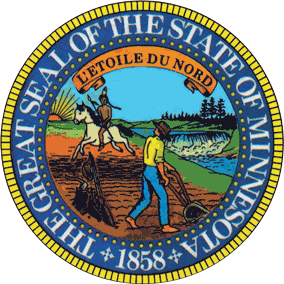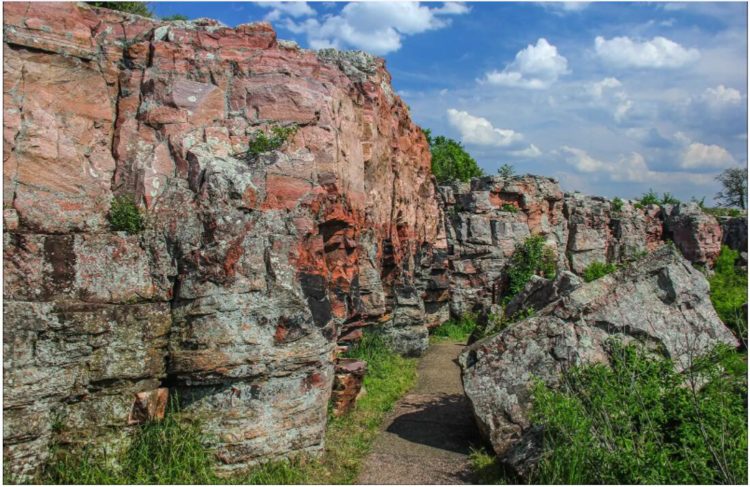| Area | 225,365 km² |
| Residents | 5,519,952 |
| Residents per km² | 24.5 |
| Capital | Saint Paul |
| Postal Code | MN |
| ISO-3166-2 code | US MN |
| FIPS code | 27 |
Minnesota (pronunciation ; from the Sioux language Dakota, ‘sky-colored water’) is the 32nd state of the United States of America and is located in the north of the country on the border with Canada. The twelfth largest US state in terms of area was formed in 1858 from the eastern part of the Minnesota Territory and a small part of the Wisconsin Territory.
Almost two thirds of the population of Minnesota lives in the metropolitan area Minneapolis-Saint Paul (Twin Cities), whereby Minneapolis with almost 383,000 residents is the most populous city in the state, St. Paul – as the second largest city (approx. 285,000 Ew.) – but the Capital.
Some large, internationally active companies have their headquarters in the “twin cities”. The largest shopping center in the USA, the Mall of America, is also located in that metropolitan region, or more precisely: in the city of Bloomington.
Minnesota bears – derived from its state motto (“L’Étoile du Nord”, French for “Star of the North”) – the nickname ” North Star State “.
The nickname of the state is also ” The Gopher State “. Gopher is the name given to the widespread thirteen-stripe croissant in Minnesota, which was initially just the namesake and mascot of most of the sports teams at the University of Minnesota (” Golden Gophers “), but later became the name for the entire state through this route. Despite two legislative initiatives, the croissant is not the official state animal of Minnesota.
Because of its many lakes, Minnesota is also known as the “ Land of Ten Thousand Lakes ”.
Economy
Minnesota’s economy has changed dramatically over the past 200 years. At the beginning of the state’s history, agriculture, forestry and the trade in goods dominated economic activity. In the course of industrialization, the secondary sector also gained in importance. Especially the region in the northwest around Duluth benefited from the iron ore deposits.
As in all industrialized countries, however, the share of the service sector in gross domestic product has continued to rise in Minnesota since the 1950s. Today more than 80 percent of all employees work in the service sector, whereas less than one percent are employed in the primary sector.
In the USA, however, the state is still one of the largest producers of agricultural products such as sugar beet, sweet corn and peas.
Dairy Belt
The Dairy Belt (“dairy belt “) is the area with intensive dairy farming in the USA. It mainly includes the New England states and the region south of the G Rossen Lakes (Great Lakes).
In particular, immigrants from Ireland (in New England), Germany, Switzerland and Scandinavia (on the Great Lakes) brought the traditional cattle breeding in their countries of origin with them and continued to practice it in their new homeland. For example, Wisconsin developed into a cheese-making center.
Due to the different climatic conditions in the two sub-areas, grassland (pasture farming) in the Atlantic-influenced region and fodder maize cultivation on the Great Lakes are the basis for cattle farming there.
Fresh milk and vegetables are predominantly produced near major cities, while butter, powdered milk and condensed milk are produced further away, for example in Minnesota. Corn cultivation and poultry farms are new in the Dairy Belt. In general, the Dairy Belt is nowadays characterized by a thoroughly diversified agricultural production.
Also known as North Star State / Gopher State / Land of 10,000 Lakes, Minnesota is short for MN with a population of 4,919,479. The capital city of Minnesota is St. Paul and the biggest city is Minneapolis.

